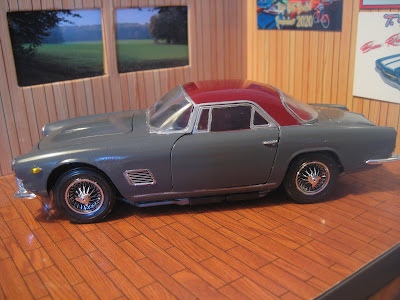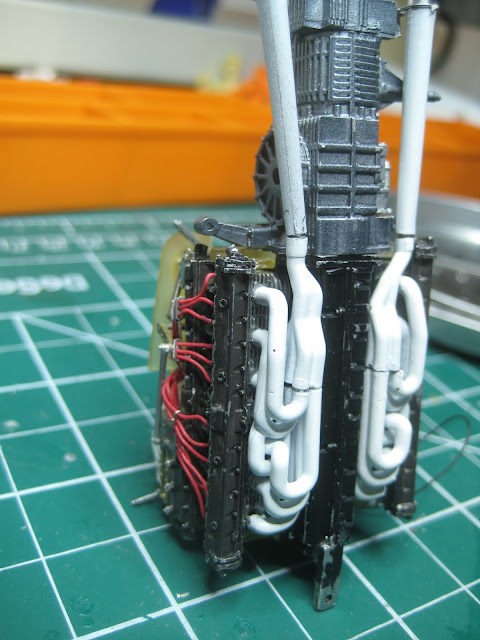Continuing with my passion for outrageous little upstarts, anything Abarth did to the Fiat 500 or 600 platforms is of interest. This resin kit from a company I had never heard of fits the bill.
Arena Modelli is an Italian outfit, making 1/43 kits in resin. They make a couple of 1/24 kits, among them this Abarth 1000 TCR, which I found on the website of the Spanish vendor Spot Model (click here). (They also offer an Opel Kadett 1900 as driven by Walter Röhrl at Monte Carlo in 1976.)
The kit claims to represent the car driven by Maurizio Campanini in the 1970 Trento-Bondone hillclimb event. Online records for these sorts of obscure outings are sparse; the only record I could find for this race (click here) shows 5 of these 1000 TCRs entered, finishing from 11th to 32nd (1st to 5th in the 1000 cc Group 2 class); but none with number 202, and none driven by Campanini. Campanini DNFed in 1971 in car #390; the kit comes with decals for #384, which was also driven to a DNF in 1971 by Dante Gargan. Sadly the site does not include data for this race other than for the years 1970-72, which is unfortunate as the car could have been built as early as 1965 or 1966.

The 1000 TCR was, as it's name implies, a 1000 cc derivative on the Fiat 600 platform. The engine appears to be a pushrod unit, rather than the twin-cam Abarth engine in the 1300 OT Periscopio I built some time ago, so it is likely a hot-rodded 600 motor. Online info confirms the pushrods, although the head is said to be a hemispherical design of Abarth's sitting on a 600 block. There are claims online (click here) of 112 hp at 8200 rpm. This was meant to be a less expensive version of the various twin-cam cars, but it wasn't enough; Abarth was bought out by Fiat in 1971, and passed away in 1979

In any case the resin is well made, the PE sheets are comprehensive, and there are a handful of white metal bits and a very nice decal sheet. I might replace the resin wheels and tires with these Scale Production Minilites. Getting the checkered roof pattern to sit flat over the curved roof may take some time, but otherwise this looks like a reasonable build. So with everything washed, it'll be time for some primer just as soon as the weather outside eases up a bit -- minus 16 C is not conducive to opening up a window to vent my spray booth exhaust outside. Stay tuned!



































